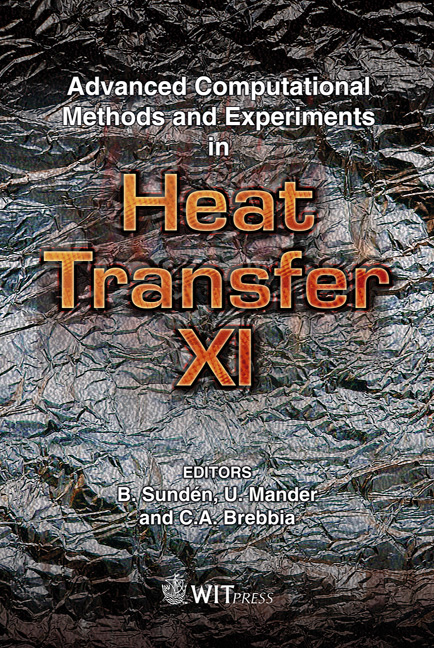Heat Transfer Increase With Thin Fins In Three Dimensional Enclosures
Price
Free (open access)
Transaction
Volume
68
Pages
9
Page Range
157 - 165
Published
2010
Size
3081 kb
Paper DOI
10.2495/HT100141
Copyright
WIT Press
Author(s)
R. L. Frederick & S. Samper
Abstract
Heat transfer enhancement with highly conductive, thin vertical fins attached to the hot wall of a differentially heated cubical enclosure is numerically investigated. Two such fins attached to the hot wall were found to promote heat transfer enhancements of over 40% with respect to the unfinned case at Ra = 105 -107. This is one of the highest enhancements found to date in cavities of low aspect ratio. At a Rayleigh number of 108, enhancements were lower, suggesting that this Rayleigh number marks the upper utilization limit of fins in enclosures to promote heat transfer. Results show that for further heat transfer optimization, sensitivity to variables as the fin thickness and length should be studied. Keywords: natural convection, differentially heated cavities, fins. 1 Introduction Although heat transfer in differentially heated cavities with fins on the active walls has been extensively studied, very few works have considered the three dimensional problem of a cubical cavity with vertical fins added to the hot wall. The extensive literature on the heat transfer effect of horizontal fins attached to one of the vertical active walls of rectangular enclosures [1-8] can be briefly summarized as follows: In low aspect ratio cavities, fins cause heat transfer reductions relative to the unfinned cavity at the same Rayleigh number if their thermal conductivity is low, while as thermal conductivity increases, fins cause moderate enhancements.
Keywords
natural convection, differentially heated cavities, fins





